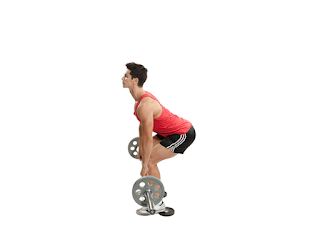Step 1: Stand with dumbbells in each of your hands on your sides. Keeping your back straight and stretched, lunge forward with left leg. Land on the heel, then forefoot. Tighten your abs for maximum stability.
Step 2: Lower yourself further by adjusting your left hip muscles and flexing the knee, until there is 2 inches gap between the right leg and the floor.
Step 3: Push yourself up from the left leg and repeat the exercise with the right leg.
Step 2: Lower yourself further by adjusting your left hip muscles and flexing the knee, until there is 2 inches gap between the right leg and the floor.
Avoid this mistake: Make sure to keep your back straight at all times. It has been observed that during this exercise many individuals bend their back unintentionally. Not only does that decrease the overall effectiveness of the workout, but also hinders in optimum muscle growth and causes lower back pain in the longer run.
Step 3: Push yourself up from the left leg and repeat the exercise with the right leg.




































